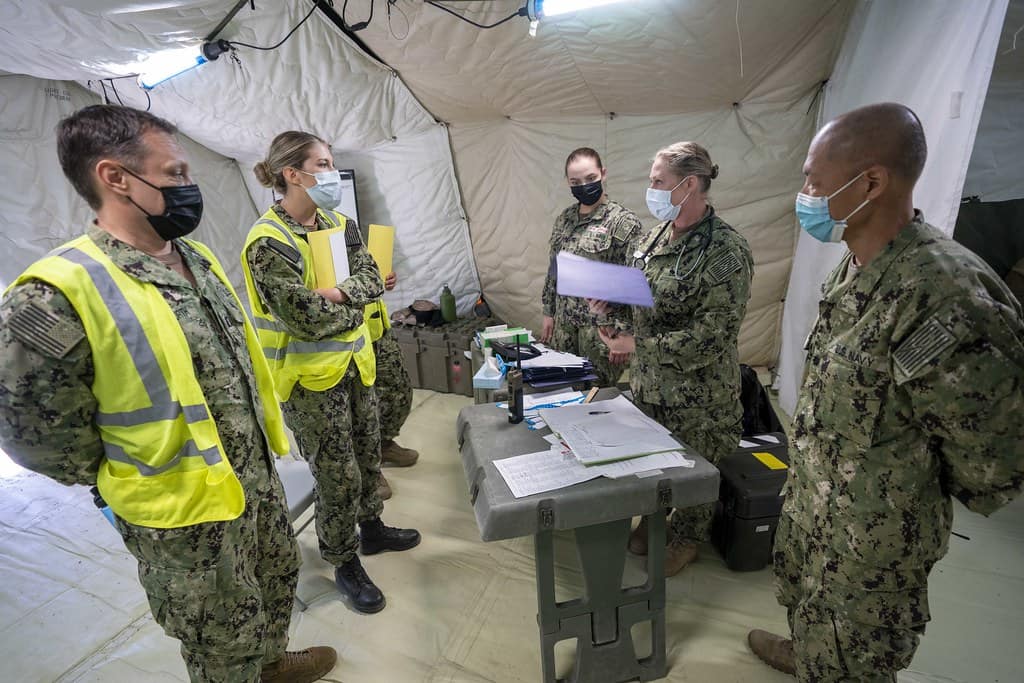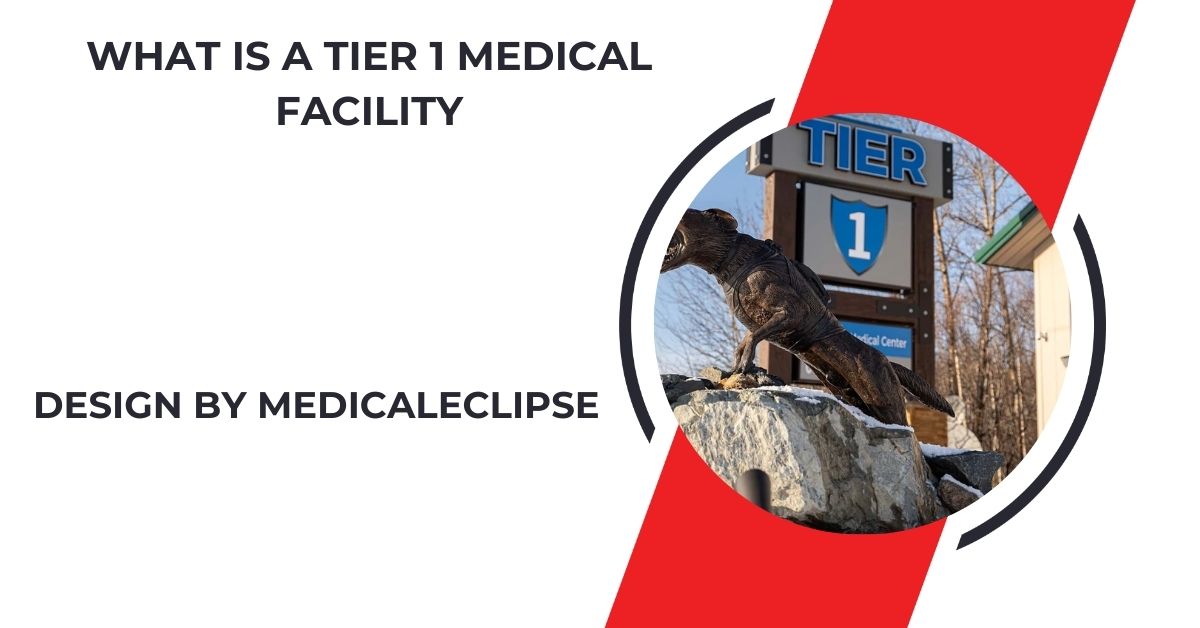A Tier 1 medical facility is a top-ranking hospital or healthcare center equipped with advanced technology, skilled specialists, and a range of specialized services, often involved in medical research and education.
This guide will walk you through everything you need to know about Tier 1 medical facilities.
What is a Tier 1 Medical Facility?

A Tier 1 medical facility is considered a top-ranking hospital or healthcare center, equipped with state-of-the-art technology, highly skilled specialists, and a wide range of specialized services. These facilities typically provide the most advanced levels of patient care and often house departments dedicated to various complex health conditions.
In many healthcare systems, Tier 1 facilities are often synonymous with “tertiary care centers” or “academic medical centers.” These institutions may conduct research, engage in medical education, and are more likely to offer specialized treatment options for complex conditions.
Characteristics of a Tier 1 Medical Facility:
Tier 1 facilities share several defining characteristics that set them apart from lower-tiered medical facilities. Here’s a look at some of the key features:
Advanced Medical Technology:
- Tier 1 facilities have the latest medical technologies, including sophisticated imaging equipment, robotic surgical tools, and advanced diagnostic systems.
- Access to innovative treatments, such as precision medicine and cutting-edge cancer therapies, is common.
Highly Qualified Healthcare Professionals:
- These facilities attract some of the most skilled doctors, surgeons, and specialists across various fields.
- Staff often includes board-certified physicians, experienced nurses, and medical professionals trained in the latest healthcare techniques.
Comprehensive Range of Specialized Services:
- Tier 1 medical facilities are designed to handle complex medical cases and provide specialized departments such as oncology, cardiology, neurology, and trauma.
- Many Tier 1 facilities offer highly specialized surgeries and procedures, like transplants or heart surgery, which may not be available in lower-tier facilities.
Teaching and Research:
- Many Tier 1 facilities are affiliated with universities or medical schools, which means they are involved in ongoing research and are often at the forefront of medical advancements.
- These facilities serve as teaching hospitals, training future generations of healthcare providers.
5. Higher Staff-to-Patient Ratio:
- A key hallmark of a Tier 1 medical facility is its higher staff-to-patient ratio. This allows for more individualized patient care, a faster response time to patient needs, and better overall patient satisfaction.
Benefits of a Tier 1 Medical Facility for Patients:

Choosing a Tier 1 medical facility can have many advantages, especially for patients with complex or high-risk conditions. Here are some of the benefits:
Access to Specialized Treatment:
- Patients can access treatments and procedures not available in smaller hospitals. This may include experimental treatments or participation in clinical trials for new therapies.
Better Health Outcomes:
- Research suggests that patients treated in Tier 1 facilities often experience better outcomes due to the availability of specialized expertise and technology.
- Higher survival rates, quicker recovery times, and more effective management of chronic diseases are common outcomes.
Enhanced Safety and Quality Assurance:
- Many Tier 1 facilities have strict quality control measures, reducing the risk of complications and ensuring a safer patient experience.
Tier 1 vs. Tier 2 and Tier 3 Medical Facilities: What’s the Difference?

Understanding how Tier 1 facilities differ from lower-tier facilities can help patients make more informed decisions about their healthcare options.
Tier 2 Facilities:
- Tier 2 facilities typically offer general hospital services but may lack the advanced specialties and equipment found in Tier 1 hospitals.
- They may refer complex cases to Tier 1 facilities, especially if specialized treatment or advanced procedures are needed.
Tier 3 Facilities:
- Tier 3 facilities are generally the most basic type of hospital and may offer limited services, often focusing on primary care, minor surgeries, and emergency treatment.
- These are suitable for routine healthcare needs but may transfer more complicated cases to Tier 1 or Tier 2 facilities.
How Tier 1 Medical Facilities Impact the Healthcare System
Tier 1 medical facilities play a critical role in the healthcare system. They provide high-level care that helps manage complex conditions, ultimately reducing the burden on other hospitals. By concentrating advanced care in these facilities, healthcare systems can optimize resources, improve outcomes, and enhance patient experiences.
Innovation and Medical Advancements:
- Tier 1 facilities often serve as innovation hubs, developing new treatments, surgical techniques, and medical technologies.
- Many groundbreaking treatments, such as immunotherapy for cancer, often originate from research conducted at Tier 1 facilities.
Also Read: Urgen Care That Is Open And Take Medicaid Greenville Sc – Medicaid Urgent Care Greenville!
Educational and Community Impact:
- These facilities contribute to the local community by creating jobs, supporting medical education, and offering community health initiatives.
- They train future healthcare providers and serve as centers for continuing education for practicing professionals.
Examples of Tier 1 Medical Facilities:
Around the world, Tier 1 medical facilities are highly regarded for their contributions to healthcare. Here are some examples:
- Mayo Clinic (USA): Known for its research, innovative treatments, and top-ranked specialties.
- Johns Hopkins Hospital (USA): A leader in research, known for pioneering surgical techniques.
- Charité – Universitätsmedizin Berlin (Germany): Renowned for both healthcare and research, especially in cardiology and neurology.
- Singapore General Hospital (Singapore): Known for its comprehensive, high-quality patient care.
Is a Tier 1 Medical Facility Right for You?
Choosing a Tier 1 medical facility depends on several factors, including your health needs, proximity, insurance coverage, and available specialists. Patients with complex conditions or those seeking advanced treatment often find that the benefits of a Tier 1 facility outweigh the potential costs or travel distances.
FAQ’s
- What is a Tier 1 medical facility?
It’s a top-level healthcare center with advanced technology, specialized services, and highly skilled professionals.
- What services do Tier 1 facilities offer?
They provide specialized departments like oncology, cardiology, and trauma, as well as complex surgeries.
- How does Tier 1 differ from other tiers?
Tier 1 offers the highest level of care and advanced treatments, while lower tiers handle general or routine healthcare needs.
- What are the benefits of a Tier 1 facility for patients?
Patients gain access to specialized care, better health outcomes, and higher safety standards.
- Are Tier 1 facilities involved in research?
Yes, many are research-focused, contributing to medical advancements and training future healthcare providers.
Conclusion
Tier 1 medical facilities represent the pinnacle of healthcare excellence, offering specialized treatments, cutting-edge technology, and highly trained medical professionals. Whether you’re facing a serious health condition or seeking advanced care options, Tier 1 facilities provide the highest standard of treatment available. Understanding the unique benefits and capabilities of these facilities can help you make an informed decision about your healthcare journey, ultimately leading to better health outcomes and peace of mind.

Leave a Reply